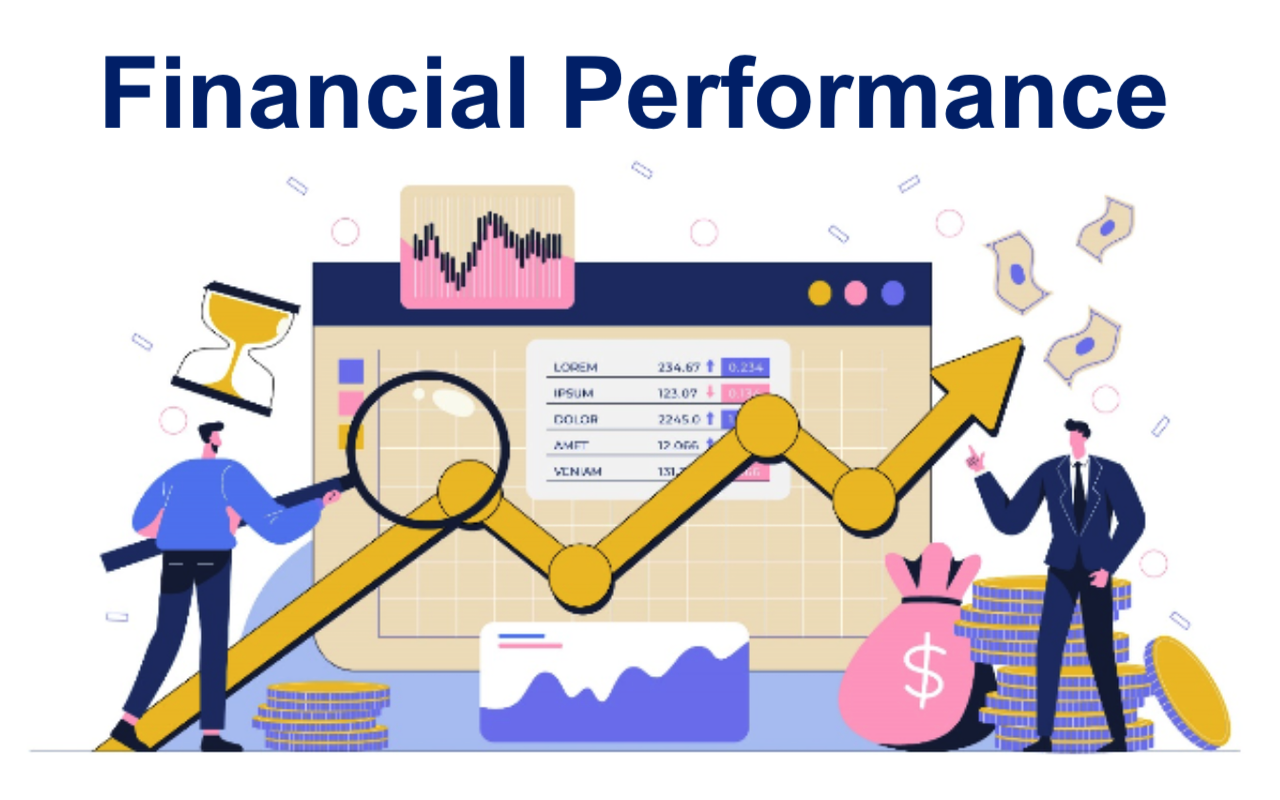
When you hear someone say, “That company is doing really well financially,” what they’re actually referring to is its financial performance. It’s like a scorecard that reveals whether a business is making smart moves with its money or digging itself into trouble. But here’s the thing-financial performance is more than just profit. It’s about efficiency, growth, stability, and the overall story of how a company is using its resources.
So, what does financial performance really mean? How do businesses measure it? And why is it such a make-or-break factor for companies, investors, and even customers? Let’s take a closer look.
What is Financial Performance?
At its simplest, financial performance is the measure of how well a company manages its resources to generate revenue and profits. Think of it as a financial “report card.” Just like students get graded on different subjects, companies get measured through various financial metrics like revenue growth, profit margins, return on investment (ROI), and cash flow.
But here’s the catch: financial performance isn’t only about making money. A business could show high revenue yet still struggle if expenses are out of control. Similarly, a company might appear stable today but face liquidity issues tomorrow if it doesn’t have enough cash to cover short-term obligations. That’s why financial performance is a multi-dimensional view rather than a single number.
Why Financial Performance Matters
Here’s the reality: without financial performance, a company’s story is incomplete. It’s what helps people decide whether to trust a business with their money, time, or loyalty.
- For Investors: It’s the deciding factor before investing. Investors want to see solid returns, not just potential.
- For Business Owners: It’s a reality check. If strategies aren’t producing results, performance metrics reveal where adjustments are needed.
- For Employees: A company with strong financials provides job stability, benefits, and growth opportunities.
- For Customers: It builds trust. Customers are more confident buying from companies that look strong and reliable.
In other words, financial performance affects everyone connected to a business-directly or indirectly.
How Does Financial Performance Work?
Understanding financial performance means zooming in on a few key areas.
1. Profitability
At the heart of performance lies profit. Are revenues greater than expenses?
- Key measures: Net profit margin, operating income, return on equity (ROE).
- Example: If a company earns $1 million in revenue and $200,000 in net profit, its net profit margin is 20%.
2. Liquidity
Can the company pay its short-term bills? Liquidity reflects financial breathing room.
- Key measures: Current ratio, quick ratio.
- Example: A business with a current ratio of 2.0 means it has twice the assets compared to liabilities—good financial health.
3. Efficiency
How well does the company use its assets and resources?
- Key measures: Asset turnover, inventory turnover.
- Example: If a company generates $5 for every $1 of assets, it’s using resources efficiently.
4. Growth
Is the company expanding steadily or stagnating?
- Key measures: Revenue growth, market share, earnings per share (EPS).
Put together, these areas give a well-rounded picture of a company’s financial performance.
Real-World Example of Financial Performance
Imagine two coffee shop chains: BrewHouse and CoffeeCo.
- BrewHouse earns $5 million in annual revenue and clears $1 million in profit. Its expenses are under control, it has cash reserves for emergencies, and its revenue has grown steadily year over year. Investors see it as a safe bet.
- CoffeeCo also earns $5 million, but after paying high rents, marketing overspending, and loan repayments, it’s left with only $100,000 in profit. Worse, its liquidity is weak-it struggles to pay suppliers on time.
Both companies make the same revenue, but their financial performance tells two very different stories. BrewHouse is in a strong position to expand, while CoffeeCo risks being overtaken by competitors.
Moral of the story? Revenue is just the surface. Performance lies in how that money is managed.
Factors That Influence Financial Performance
Several factors can make or break a company’s numbers:
- Market Conditions - Economic booms, recessions, or even global events like pandemics can affect performance.
- Leadership Decisions - Smart cost-cutting, diversification, or investment choices can improve outcomes.
- Technology & Innovation - Companies embracing automation, AI, and digital tools often boost efficiency.
- Competition - Strong rivals force businesses to be sharper and more efficient.
- Customer Behavior - Changing preferences (like a shift to online shopping) can make or break companies that fail to adapt.
How Companies Improve Financial Performance
No company is perfect. Even market leaders constantly look for ways to strengthen their financial health. Here are some strategies:
- Expense Management - Regularly reviewing costs to eliminate waste.
- Revenue Diversification - Expanding product lines or services to avoid over-reliance on one stream.
- Cash Flow Optimization - Ensuring money comes in faster than it goes out.
- Leveraging Technology - Using AI, analytics, and automation to cut costs and improve decision-making.
- Customer Loyalty Programs - Because repeat customers are cheaper to retain than acquiring new ones.
- Employee Training - Skilled employees improve efficiency and productivity, which reflect directly on financial performance.
The Role of Financial Statements
To measure financial performance, businesses rely on three key documents:
- Income Statement (Profit & Loss Statement): Shows revenue, expenses, and profit over time.
- Balance Sheet: A snapshot of assets, liabilities, and equity.
- Cash Flow Statement: Tracks the movement of money in and out of the business.
These three together tell the complete financial story. Skipping any one of them is like watching a movie with missing scenes-you won’t get the full picture.
A Broader Perspective: Beyond Just Numbers
Here’s something often overlooked: financial performance isn’t just about cold, hard numbers. It’s about trust, reputation, and long-term sustainability. For example, a company might cut costs aggressively to boost short-term profits but damage customer service in the process. While the numbers look good temporarily, the long-term financial performance could suffer.
That’s why businesses must balance profitability with innovation, ethics, and customer satisfaction.
Final Thoughts
Financial performance is more than an accounting term-it’s the pulse of a business. From profits and liquidity to growth and efficiency, it gives a complete picture of how a company is really doing. Strong financial performance opens doors to expansion, investor confidence, and long-term stability. Weak performance, on the other hand, serves as a warning sign that something isn’t working.
At the end of the day, numbers don’t lie. A company that consistently measures, evaluates, and adapts its financial strategies is the one that doesn’t just survive-it thrives.
Share this post
Leave a comment
All comments are moderated. Spammy and bot submitted comments are deleted. Please submit the comments that are helpful to others, and we'll approve your comments. A comment that includes outbound link will only be approved if the content is relevant to the topic, and has some value to our readers.

Comments (0)
No comment